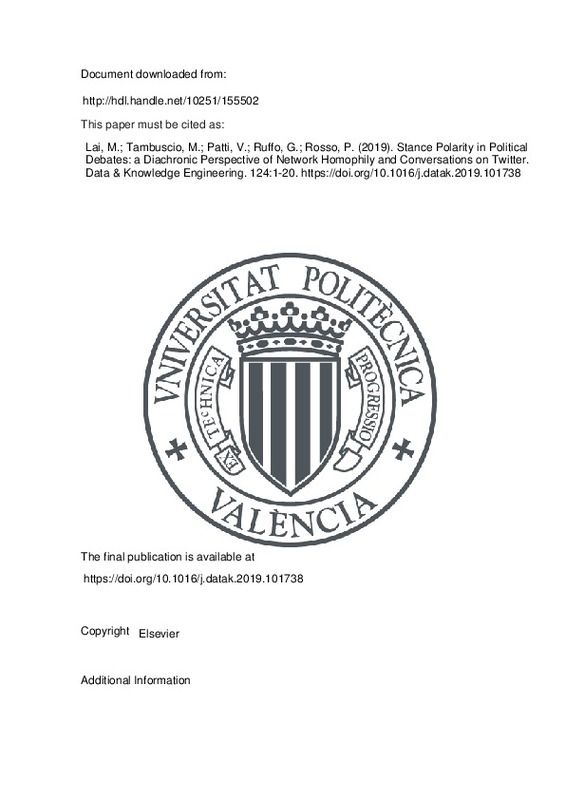JavaScript is disabled for your browser. Some features of this site may not work without it.
Buscar en RiuNet
Listar
Mi cuenta
Estadísticas
Ayuda RiuNet
Admin. UPV
Stance Polarity in Political Debates: a Diachronic Perspective of Network Homophily and Conversations on Twitter
Mostrar el registro completo del ítem
Lai, M.; Tambuscio, M.; Patti, V.; Ruffo, G.; Rosso, P. (2019). Stance Polarity in Political Debates: a Diachronic Perspective of Network Homophily and Conversations on Twitter. Data & Knowledge Engineering. 124:1-20. https://doi.org/10.1016/j.datak.2019.101738
Por favor, use este identificador para citar o enlazar este ítem: http://hdl.handle.net/10251/155502
Ficheros en el ítem
Metadatos del ítem
| Título: | Stance Polarity in Political Debates: a Diachronic Perspective of Network Homophily and Conversations on Twitter | |
| Autor: | Lai, Mirko Tambuscio, Marcella Patti, Viviana Ruffo, Giancarlo | |
| Entidad UPV: |
|
|
| Fecha difusión: |
|
|
| Resumen: |
[EN] In the last decade, social media gained a very significant role in public debates, and despite the many intrinsic difficulties of analyzing data streaming from on-line platforms that are poisoned by bots, trolls, and ...[+]
|
|
| Palabras clave: |
|
|
| Derechos de uso: | Reconocimiento - No comercial - Sin obra derivada (by-nc-nd) | |
| Fuente: |
|
|
| DOI: |
|
|
| Editorial: |
|
|
| Versión del editor: | https://doi.org/10.1016/j.datak.2019.101738 | |
| Código del Proyecto: |
|
|
| Agradecimientos: |
The work of Viviana Patti and Giancarlo Ruffo was partially funded by the Fondazione CRT under research project the Hate Speech and Social Media (2016.0688), and the "Progetto di Ateneo/CSP 2016" under research project ...[+]
|
|
| Tipo: |
|







![[Cerrado]](/themes/UPV/images/candado.png)


